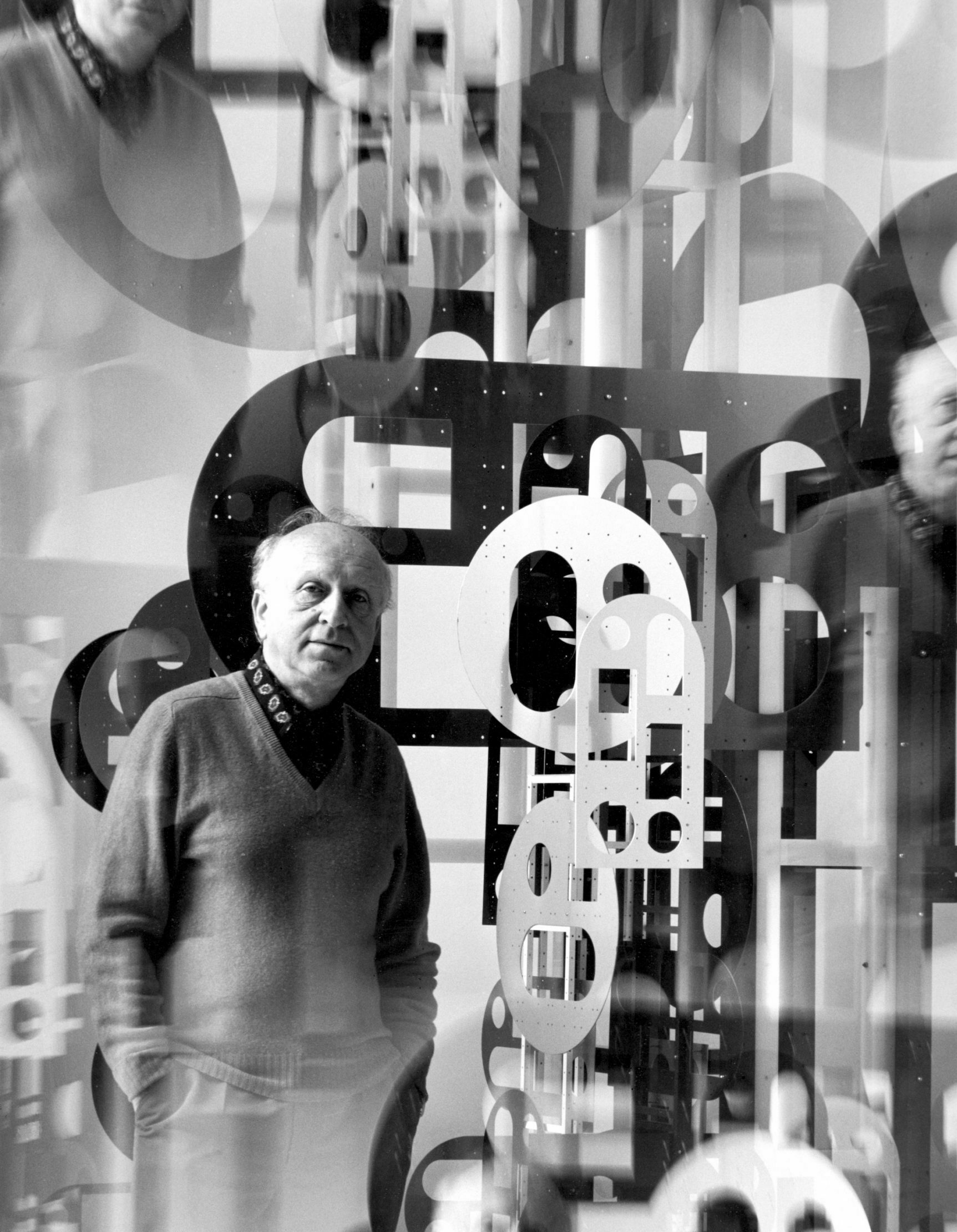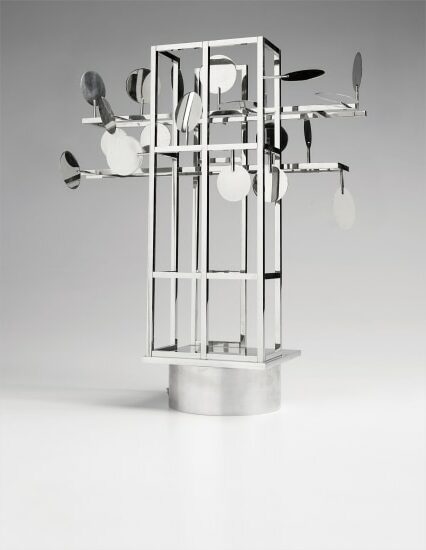Nicolas Schöffer
Born in 1912 in Kalocsa, Hungary, Nicolas Schöffer stands as a pioneering figure in the realm of spatio-dynamic cybernetic light art.
After completing his studies at the Beaux-Arts in Budapest, Schöffer made a significant move to Paris in 1936. Inspired by the innovative work of Hungarian counterpart László Moholy-Nagy, who crafted the Light Space Modulator in the 1920s, Schöffer articulated the theory of Spatiodynamism in 1948. He defined it as « the constructive and dynamic integration of space in plastic arts. »
The 1950s marked a transformative period for Schöffer as he delved into groundbreaking experiments with spatio-dynamic kinetic light sculptures. His creative endeavors expanded to the production of robotic cybernetic pieces capable of autonomous movement through space. Consequently, Schöffer earned recognition as the inaugural artist to integrate electronic computation, thereby introducing a notable degree of interactivity into the annals of art history. His robotic creations, exhibiting a remarkable fusion of technology and artistic expression, showcased the evolution of art into the realms of dynamic, interactive experiences.
Nicolas Schöffer’s legacy endures as a trailblazer who did not only enrich the artistic landscape with his innovative theories but also pushed the boundaries of creativity by harnessing the potential of technology in the service of art.

